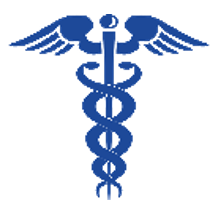10 Essential Statistical Tools for Pharmaceutical Analysis: A Guide for Professionals
- Pharmaceutical Guideline

- Sep 7, 2024
- 3 min read
In the fast-paced world of pharmaceuticals, accuracy and precision are paramount. The use of statistical tools plays a crucial role in ensuring the quality and efficacy of pharmaceutical products. From control charts to process capability factors, these tools empower professionals to make data-driven decisions and maintain the highest standards. Let's dive into the top 10 statistical tools that every pharmaceutical employee should be familiar with:
1. Control Charts
Control charts are a fundamental tool in pharmaceutical analysis, allowing professionals to monitor processes over time and detect any variations that may occur. By graphically displaying data points, control charts enable quick identification of trends or anomalies that could impact product quality.
2. Standard Deviation
Standard deviation is a key statistical measure that helps pharmaceutical professionals understand the dispersion of data points within a dataset. By calculating the standard deviation, individuals can assess the consistency and variability of results, aiding in decision-making processes.
3. Process Capability Factor (Cpk)
The process capability factor, often denoted as Cpk, is an essential metric in pharmaceutical analysis that quantifies a process's ability to produce products within specified limits. By calculating Cpk values, professionals can evaluate process performance and ensure that it meets quality standards.
4. Histograms
Histograms are graphical representations of data distribution, providing pharmaceutical employees with a visual depiction of frequency and intensity. Analyzing histograms aids in identifying patterns and trends within datasets, facilitating informed decisions in product development and quality control.
5. Scatter Plots
Scatter plots are valuable tools for visualizing relationships between variables in pharmaceutical analysis. By plotting data points on a graph, professionals can identify correlations or patterns that may exist, leading to insights that drive research and development efforts.
6. Pareto Analysis
Pareto analysis is a prioritization technique that helps pharmaceutical professionals identify the most significant factors contributing to a particular outcome. By focusing on the vital few rather than the trivial many, Pareto analysis streamlines decision-making processes and enhances efficiency in pharmaceutical operations.
7. Box Plots
Box plots, also known as box-and-whisker plots, offer a concise way to represent data distribution and variability. In pharmaceutical analysis, box plots provide a visual summary of key statistical measures, such as median, quartiles, and outliers, aiding in the interpretation of complex datasets.
8. ANOVA (Analysis of Variance)
ANOVA is a statistical technique used in pharmaceutical research to compare means across two or more groups. By conducting ANOVA tests, professionals can determine whether differences observed in data are statistically significant, guiding experimental design and data interpretation.
9. Regression Analysis
Regression analysis is a powerful tool for modeling relationships between variables in pharmaceutical studies. By examining the impact of independent variables on a dependent variable, regression analysis helps predict outcomes and optimize processes to enhance drug development and manufacturing.
10. Chi-Square Test
The Chi-Square test is a statistical method used to assess the independence of categorical variables in pharmaceutical analysis. By evaluating the association between variables, pharmaceutical professionals can make informed decisions regarding treatment efficacy, patient outcomes, and product safety.
In conclusion, mastering these essential statistical tools is vital for pharmaceutical professionals to analyze data accurately, make informed decisions, and ensure the quality and safety of pharmaceutical products. By leveraging these tools effectively, professionals can drive advancements in drug development, regulatory compliance, and patient care, shaping the future of the pharmaceutical industry. Become a statistical expert and elevate your pharmaceutical analysis with these indispensable tools!










I really enjoyed your post—it highlights the seamless and secure gaming experience well. Fairplay24 truly delivers with intuitive registration, strong security, and a user-friendly design. The Fairplay24 login is especially impressive—fast, reliable, and encrypted for full data protection. Your review perfectly captures that balance of functionality and trust, which makes all the difference for users exploring gaming platforms. Would love to hear how your experience compares!
Team Fairplay24 https://fairplay24.world/
Mastering statistical tools is vital in pharmaceutical analysis, as they ensure precision, compliance, and data reliability in research. From regression analysis to ANOVA, each method plays a key role in validating results and guiding decision-making. For professionals aiming to present such complex data effectively, Dissertation Writing Services Cheap can help structure findings into well-organized, academically sound reports that meet industry and academic standards.
10 Essential Statistical Tools for Pharmaceutical Analysis provides valuable insights for professionals in the pharmaceutical industry. It effectively breaks down complex tools like regression analysis and control charts in a practical context. This resource is also incredibly helpful for students in health-related fields who may seek guidance to do my nursing assignment with a deeper understanding of pharmaceutical data. The clarity and relevance of examples used enhance its usefulness in academic and clinical applications alike. Overall, it's a commendable guide for both learners and professionals.
I have ordered from the https://geppharma.com/ store several times already - everything is clear and without any hitches. Convenient website, quick consultation on choosing drugs. The quality is high - the results are really noticeable: muscles have become denser, endurance has increased. The packaging is always neat, nothing is wrinkled, delivery is fast. If you are looking for a proven place to buy - I recommend it!